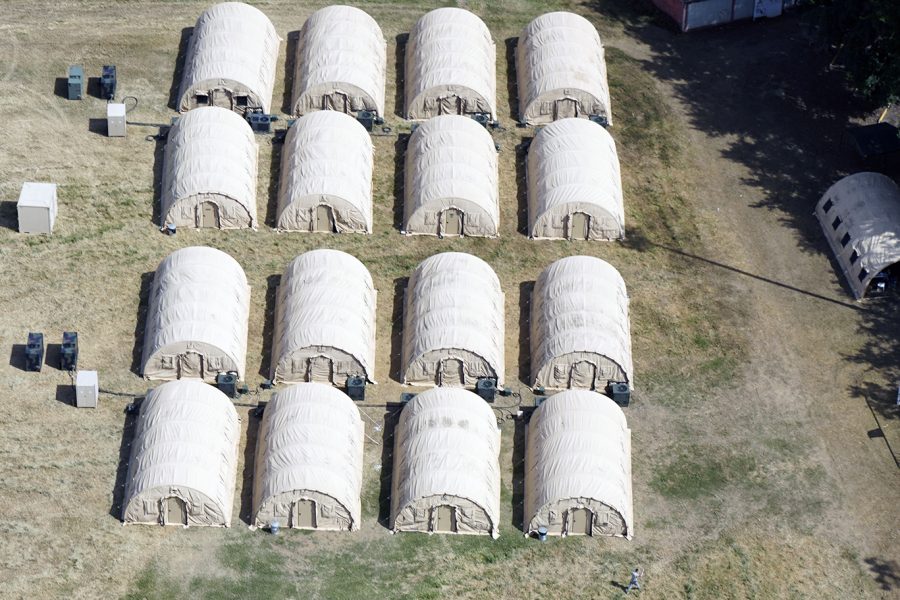CAROLINA, Puerto Rico—Puerto Rico needs its own Disaster Relief Beddown Systems to speed disaster response in the region and to cut associated costs, Puerto Rico Air National Guard leaders said Jan. 21.
The system, also known as DRBS, is essentially a tent-city-creation kit.
Two are currently on loan to Puerto Rico from the Ohio Air National Guard, whose RED HORSE airmen—along with their counterparts from the New Mexico Air National Guard—used them to construct pop-up military towns in Guánica and Guayanilla, Puerto Rico, following a magnitude 6.4 earthquake that shook the territory on Jan. 7.

DRBS is designed to provide a secure place for first responders, not to house civilians, explained PRANG Deputy Commander and Chief of Staff Brig. Gen. Paul Loiselle in a Jan. 21 interview with Air Force Magazine at Muñiz Air National Guard Base here.
“It’s like [an] all in one living space, and that’ll allow us now to house 300 first responders here on the island,” he said.
But leaders say they need the systems to be located in the territory because of the quick response time that natural disasters demand and the prohibitive price tag involved in transporting the systems to Puerto Rico—since they’re normally transported via C-130s.
Twenty DRBS systems exist within the United States, said Loiselle, but none are stationed in Puerto Rico, the Bahamas, or the Caribbean. For this reason, the systems had to be loaned to Puerto Rico during Hurricanes Irma and Maria, he said.
CMSgt. Hector Garcia, the 156th Airlift Wing’s command chief, called housing troops “one of the biggest challenges” the PRANG encountered while responding to the aftermath of Hurricane Maria. He said the issue was compounded when “FEMA took over all the hotels.”
“So we had people literally sleeping in the hallways, in the few facilities that we had that were not flooded,” Garcia told Air Force Magazine in the same interview.
Maj. Gen. José Reyes—Puerto Rico’s current adjutant general who served as the dual status commander in charge of directing DOD’s Hurricane Maria response efforts on the ground—asked for 12 DRBSes to help the situation, but only received about half that number in a “not very timely” manner, Loiselle said.

“Our goal is to get two of those permanently located here,” Loiselle said. “But I know they’re not adding any new kits right now.”
For the current response, the DRBS systems were sent to Puerto Rico via commercial flights, and then transported to the southern part of the territory by military convoys. However, it normally takes “six or eight C-130s to move just one set of them,” Loiselle noted.
“I can tell you that, per flying hour in a C-130, it’s roughly $8-$10,000, and … I don’t even wanna guess how many C-130 movements it would take, but it’s a lot to move the entire DRBS down here,” said 156th Airlift Wing Commander Col. Peter Boone.
But the need for having locally based DRBS systems comes down to more than money, Loiselle said.
“At the end of the day, for all of us, as Americans, it’s about how quickly can you save lives … and respond to a disaster,” he said.
